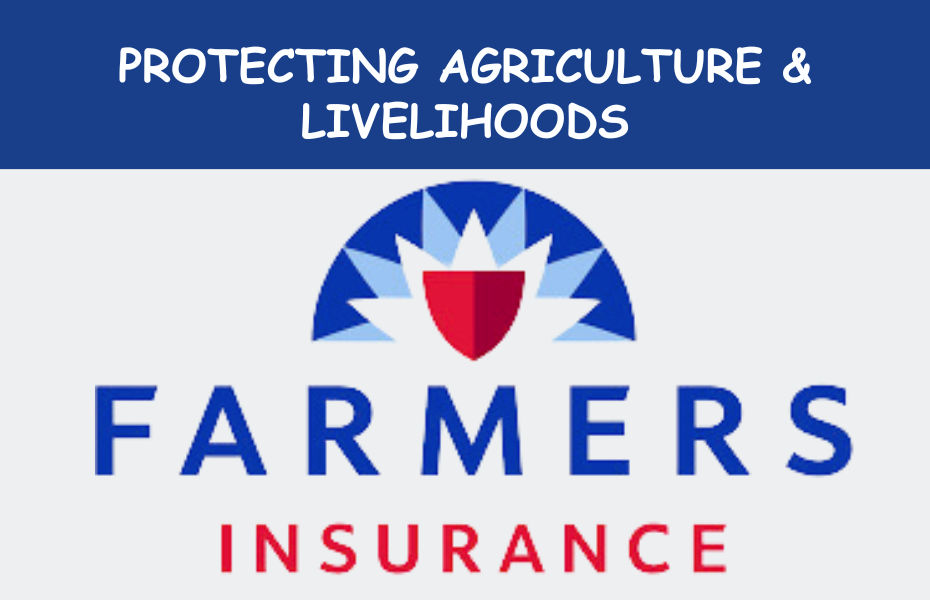Farmer Insurance: Agriculture is the backbone of many economies around the world, providing food, raw materials, and employment opportunities to millions of people. However, farming is not without its risks.
Farmers face numerous challenges, from unpredictable weather patterns to pests and diseases, all of which can threaten their livelihoods. This is where farmer insurance comes into play.
Farmer insurance is a crucial tool that safeguards the interests of farmers and the agricultural sector as a whole. In this article, we will delve into the world of farmer insurance, exploring its importance the types of coverage it offers, its benefits to farmers and the broader community and some challenges it faces.
The Importance of Farmer Insurance
Farming is a high-risk endeavor. Farmers are exposed to a variety of risks that are often beyond their control. These risks include:
- Weather-Related Risks: Unpredictable weather patterns, such as droughts, floods, and storms, can devastate crops and livestock.
- Pest and Disease Outbreaks: Insects, diseases, and other pests can ravage crops and reduce yields.
- Market Price Fluctuations: Farmers are at the mercy of market forces that can lead to fluctuations in the prices of their products.
- Accidents and Machinery Breakdowns: Farming involves the use of heavy machinery, which can break down or cause accidents, leading to financial losses.
- Crop Failures: Even with the best care, crop failures can occur due to a variety of factors.
- Livestock Mortality: Farmers raise livestock, and diseases or accidents can lead to the loss of valuable animals.
- Political and Regulatory Changes: Government policies and regulations can impact farming operations and profitability.
In the face of these risks, farmer insurance provides a safety net. It helps farmers mitigate the financial impact of unexpected events, allowing them to recover and continue their operations. Furthermore, it contributes to food security by ensuring a stable and consistent food supply.
Types of Farmer Insurance
- Crop Insurance: Crop insurance protects farmers against losses caused by weather events, pests, and diseases. It typically covers the cost of replanting crops or compensates for lost income due to reduced yields.
- Livestock Insurance: This type of insurance covers livestock losses due to accidents, diseases, or theft. It ensures that farmers do not suffer financially when they lose valuable animals.
- Farm Equipment Insurance: Farm equipment is essential for modern agriculture. This insurance type covers the repair or replacement costs of machinery and equipment if they break down or are damaged.
- Income Protection Insurance: Income protection insurance provides farmers with a steady income in the event of a covered loss. It helps maintain their financial stability even when their farming operations are disrupted.
- Farm Liability Insurance: Farmers may face legal liabilities if someone is injured on their property or if their products cause harm. Farm liability insurance protects them from the financial repercussions of such incidents.
Benefits of Farmer Insurance
- Risk Mitigation: The primary benefit of farmer insurance is risk mitigation. It provides farmers with financial support during difficult times, reducing the impact of unexpected events on their income and livelihoods.
- Stability in Agriculture: Farmer insurance promotes stability in the agriculture sector. When farmers have a safety net, they are more likely to invest in modern farming practices and technologies, leading to increased productivity.
- Food Security: By safeguarding the livelihoods of farmers, insurance contributes to food security. When farmers can recover from losses more easily, they are more likely to continue producing food consistently.
- Economic Resilience: Farmer insurance also enhances the economic resilience of rural communities. When farmers can recover from losses, they continue to spend money locally, supporting local businesses and communities.
- Financial Inclusion: Insurance can also help include small and marginalized farmers in the financial system. When they have insurance, they are more likely to access credit and invest in their farms.
Challenges Facing Farmer Insurance
While farmer insurance offers numerous benefits, it also faces several challenges:
- Affordability: In many developing countries, insurance premiums can be prohibitively expensive for small-scale farmers. Making insurance more affordable and accessible is a significant challenge.
- Data Availability: Accurate and up-to-date data on farming practices, weather patterns, and other relevant factors are essential for pricing insurance policies and assessing claims. Data collection can be challenging in rural areas.
- Moral Hazard: Farmers might take excessive risks if they believe insurance will cover all their losses. Striking a balance between providing adequate coverage and avoiding moral hazard is a challenge for insurers.
- Claims Processing: Timely and efficient claims processing is crucial for the effectiveness of farmer insurance. Delays and bureaucratic hurdles can deter farmers from using insurance.
- Climate Change: With climate change leading to more frequent and severe weather events, insurance companies face the challenge of accurately assessing and pricing risk.
- Lack of Awareness: Many farmers are unaware of the benefits of insurance or do not understand how it works. Increasing awareness and financial literacy is essential.
- Government Involvement: The role of governments in supporting farmer insurance programs varies from country to country. Achieving the right balance of government involvement can be challenging.
Case Studies: Successful Farmer Insurance Programs
- India’s Pradhan Mantri Fasal Bima Yojana (PMFBY): India’s PMFBY is one of the world’s largest crop insurance programs. It aims to provide affordable crop insurance to farmers and has made significant strides in increasing coverage and reducing premium rates for farmers.
- Kenya’s Index-Based Livestock Insurance (IBLI): In Kenya, IBLI uses satellite data to trigger insurance payouts based on the severity of drought. This innovative approach has helped protect pastoralists’ livestock assets in arid regions.
- United States Federal Crop Insurance: The U.S. has a well-established federal crop insurance program that provides a safety net for farmers. It has been instrumental in stabilizing the agricultural sector, particularly during times of natural disasters.
Farmer insurance is a crucial tool for safeguarding the livelihoods of farmers and ensuring the stability of the agriculture sector. It provides a safety net against the numerous risks and challenges that farmers face, from weather-related disasters to market fluctuations. By mitigating these risks, farmer insurance contributes to food security, economic resilience and rural development.
However, challenges such as affordability, data availability, and awareness must be addressed to make farmer insurance more accessible and effective. Governments, insurers, and other stakeholders need to work together to create sustainable and inclusive farmer insurance programs that benefit both farmers and society as a whole. In doing so, we can protect the backbone of our economies and ensure a stable and secure food supply for future generations.



